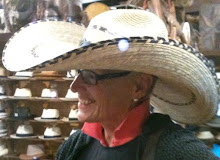skip to main |
skip to sidebar
While city trees were ripping apart and crashing onto parked cars in Brooklyn and Queens last week, here in rural Michigan an old giant was being intentionally and methodically brought to earth across the road from our building.
Although a venerable sentry for the Sumnerville Bible Baptist Church, Old Tree was also a threat and a nuisance as it shed its branches in windstorms, and Dan the Minister had no alternative but to have it taken down--- heavy limb by heavy limb. We are relieved that all the neighborhood foresters survived the Felling Bee, and we are mesmerized by the sheer volume of wood, of accumulated vegetable growth -- photosythesis writ large -- that lies on the ground. The ancient girth of Old Tree stumped garden-variety tools, and someone will have to find a chain saw with a 36" blade if the remainder of the trunk is not to be a permanent lawn ornament in front of the church.

For all its dignity, the tree seems to have had an unfortunate name. Botanically, we are a casual lot around here, and we sort of agree that it is a Stinkwood tree. Green-a-Planet says that the Stinkwood is "tough and strong, and polishes well, but is difficult to work. It is a good general timber suitable for making planks, shelving, yokes, tent-bows and furniture. The African people have always used it to make a variety of household articles. It is also thought to have magical properties. The wood is mixed with crocodile fat as a charm against lightning, and many people believe that it has the power over evil and that pegs of wood driven into the ground will keep witches away."
Perhaps the mighty root system will continue to keep this little village free from harm.Taking the giant down required two hard days; reducing it to firewood will take weeks. We are grateful for its life, from shade to heat, with good juju.
After a hot and humid summer, the new season gave us a cool, bright, windy day, and with great pleasure I went a few miles up the road to the annual pow wow of the Pokagon Band of the Potawatomi. It is an event of great vitality, spiritual significance, and beauty.
 Called Kee-Boon-Mein-Kaa, the pow wow celebrates the harvest, and the name means literally "I have quit picking huckleberries." In my years here I do not think I have seen a huckleberry, although I could be wrong. An ancient tradition, the pow wow serves as a reunion, a renewal, and a chance to dance.
Called Kee-Boon-Mein-Kaa, the pow wow celebrates the harvest, and the name means literally "I have quit picking huckleberries." In my years here I do not think I have seen a huckleberry, although I could be wrong. An ancient tradition, the pow wow serves as a reunion, a renewal, and a chance to dance.



